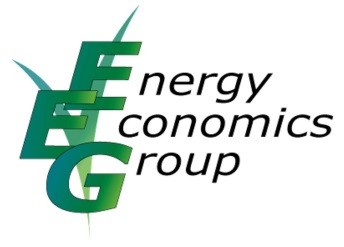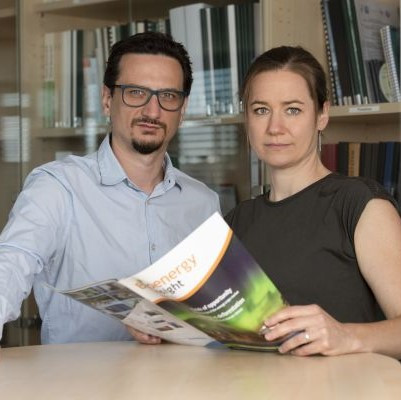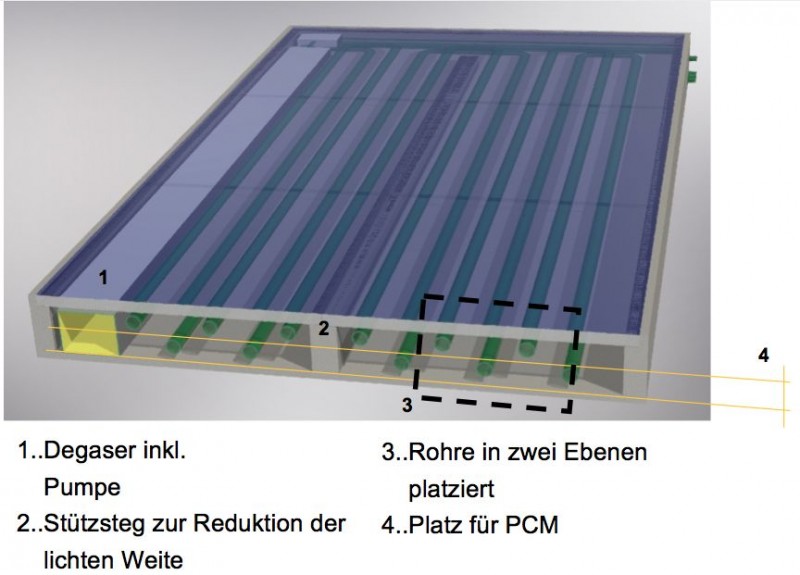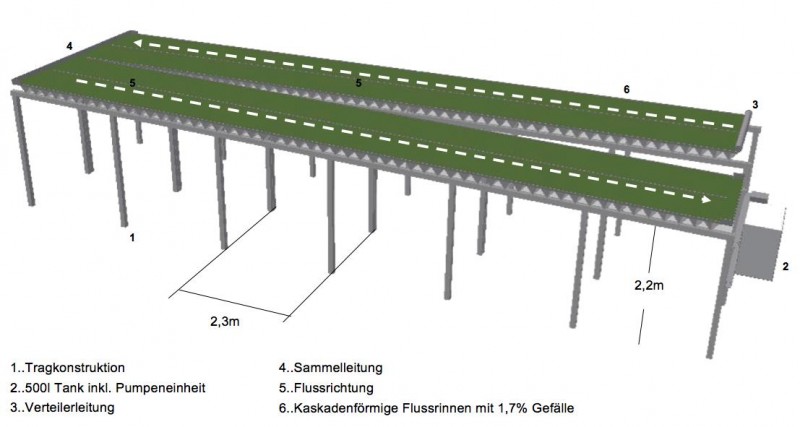The Green Parking Space:Nutzung von städtischen Verkehrsflächen für die Produktion von Biomasse
Manche Verkehrs- und Parkplatzflächen im städtischen Umfeld werden nur während eng begrenzter Zeiten genutzt. Das gilt etwa für Parkplätze von großen, peripher gelegenen Kinos, die üblicherweise erst in den Abendstunden in nennenswertem Ausmaß belegt sind. Auch die Parkplätze vieler peripherer Einkaufszentren werden erst ab dem späten Nachmittag sowie an Samstagen intensiv genutzt. Die restliche Zeit stehen diese Flächen leer und haben weder produktiven noch dekorativen Nutzen.
Zugleich ist ein Problem bei der Nutzung erneuerbarer Energien, insbesondere von Solar- und Bioenergie, ihr Flächenbedarf, der aus der geringen Energiedichte der Sonnenstrahlung resultiert. Zu Recht wird oft kritisch angemerkt, dass die intensive Nutzung erneuerbarer Energien Flächen beanspruchen kann, die ökologisch wertvoll sind oder für andere Zwecke (insbesondere Nahrungs- und Futtermittelproduktion) gebraucht würden.
Aufgrund der schlechten Nutzung mancher Verkehrsflächen bietet es sich an, solche wenig genutzte Flächen, die für Ökologie und Nahrungsmittelproduktion ohnehin bereits verloren sind, zusätzlich für die Energiegewinnung heranzuziehen. Das kann z.B. mittels Photovoltaik geschehen, aber auch durch Kultivierung von Mikroalgen. Eine solche Nutzungsform hätte den Vorteil, dass die Algen nicht nur energetisch, sondern auch stofflich (als Ausgangsmaterial für Bioraffinieren oder zur Düngerproduktion) verwendbar wären.
Dieser Ansatz wurde im Projekte Green P genauer untersucht, wobei die Auswertung von Wetter- und Flächennutzungdaten), technisch-naturwissenschaftliche Grundsatzüberlegungen und Berechnungen sowie Simulationen mit eigens erstellten Computermodellen zum Einsatz kamen. Zudem wurde eine ökonomische Bewertung samt Analyse der kostentreibenden Faktoren erstellt.
Im Projekt wurden drei Konzepte für die Mikroalgenkultivierung näher ausgearbeitet:
- In den Boden integrierte tubuläre Photobioreaktoren
- Offene Kaskadensysteme in der Parkplatzüberdachung
- Lichternte in der Parkplatzüberdachung
Den Simulationsrechnungen zufolge können so Erträge von 7-8 Tonnen Biomasse pro Hektar Fläche und Monat erreicht werden. Als wesentliches Kriterium für die Produktivität hat sich der Wärmehaushalt herausgestellt. Hier haben in den Boden integrierte Lösungen deutliche Vorteile. Die Verdunstungskühlung in offenen Systemen ist zwar relevant, kann aber eine deutliche Reduktion der Produktivität nicht verhindern.
Wie die wirtschaftliche Analyse klar zeigt, ist eine rein energetische Nutzung der produzierten Biomasse nicht zielführend. Die Mikroalgenkultivierung kann nur bei Einbeziehung der stofflichen Komponente sinnvoll sein, sei es durch direkte Nutzung lokaler Abwasser- und Abgasströme, sei es durch Produktion von lokal genutzten Wertstoffen (z.B. Dünger für Urban Gardening oder Fischfutter für aquaponische Systeme). Diese beiden Ziele stehen in Konkurrenz, denn je hochwertiger die Produkte sind, desto schwerer lassen sich Abfallströme in deren Herstellung integrieren.
Veröffentlichungen und Vorträge:
- K. Lichtenegger, M. Zellinger, F. Schipfer: Green P – Nutzung von Verkehrsflächen zur Biomasseproduktion, Biobased Future 7, Jänner 2017
- F. Schipfer, K. Lichtenegger, M. Zellinger et al.: The Green Parking Space – Nutzung von städtischen Verkehrsflächen für die Produktion von Biomasse. First Vienna Vertical Farming Meetup 01.03.2017, Wien
- Vortrag von Klaus Lichtenegger am Science Breakfast (gemeinsame Veranstaltung von BE2020 mit dem Institut für Verfahrenstechnik der der TU Wien) am 7. März 2017 in Wieselburg
- Vortrag von Klaus Lichtenegger am Algennetzwerk-Treffen am 3. April 2017 in Graz
- Teilnahme von Michael Zellinger mit einem Vortrag an der Konferenz Eco World Summit in Melbourne (12.-14. Juli 2017)
- Artikel zum Projektkonzept im Standard: http://derstandard.at/2000067569743/Idee-Parkplatzflaechen-zur-Zucht-von-Mikroalgen-verwenden
- Beitrag in den Wirtschaftnachrichten Donauraum, Ausgabe Oktober 2017.
- Teilnahme von Michael Zellinger mit einem Vortrag an der Konferenz World Sustainable Energy Days (WSED) im Rahmen der Young Biomass Researchers Conference 2018 in Wels.
- Publizierbarer Endbericht: https://nachhaltigwirtschaften.at/de/sdz/publikationen/
- schriftenreihe-2015-25_green_p.php
Daneben hat das Konsortium die Erstellung eines bmvit-Infothek-Beitrags zur Mikroalgenkultivierung – https://infothek.bmvit.gv.at/mikroalgen-unscheinbare-multitalente/ – mit fachlicher Expertise unterstützt. Michael Zellinger hat mit der Vorstellung des Projekts den Science Slam 2017 an der FH Wr. Neustadt (Campus Wieselburg) gewonnen.
Projektvolumen
EUR 99.958,--
Projektlaufzeit
2016-10-01 - 2017-09-30
Finanzierung
bmvit (Ausschreibung Stadt der Zukunft)
Projektpartner



Ansprechperson

Klaus LICHTENEGGER
klaus.lichtenegger@best-research.eu
Area Management

Elisabeth Wopienka / Manuel Schwabl
elisabeth.wopienka@best-research.eu manuel.schwabl@best-research.eu
Publikationen
Green P – Nutzung von Verkehrsflächen zur Biomasseproduktion
The Green P - Nutzung von städtischen Verkehrsflächen für die Produktion von Biomasse
The Green Parking Area – Utilization of urban parking areas for cultivation of algae
The Green Parking Area – Utilization of urban parking areas for cultivation of microalgae
The Green Parking Space – Nutzung von städtischen Verkehrsflächen für die Produktion von Biomasse


